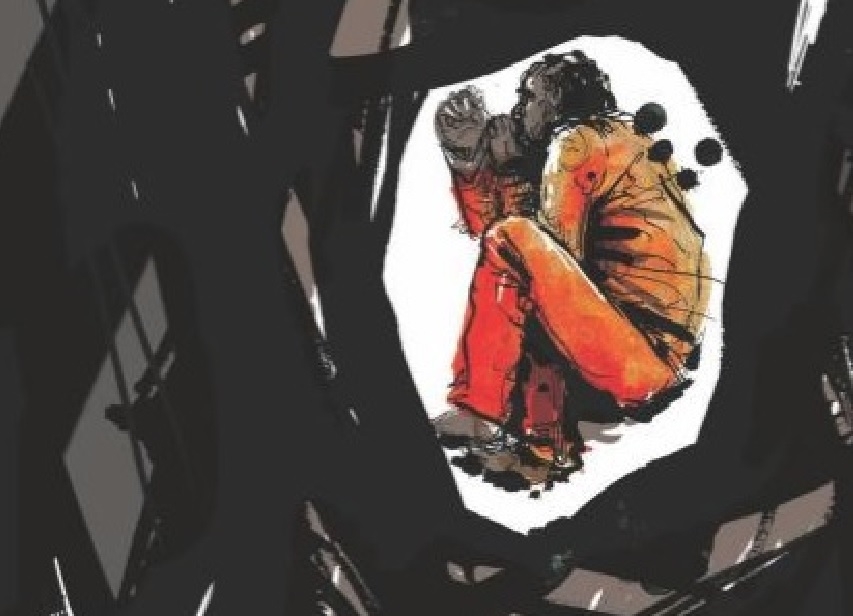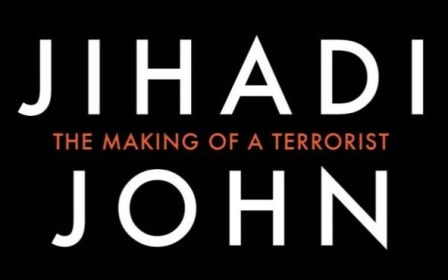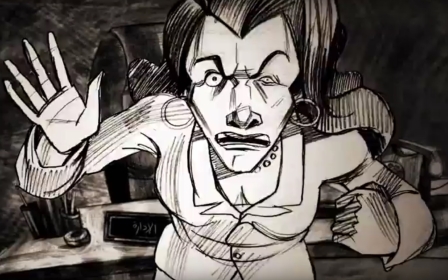Drones and solitary confinement: The dehumanisation industrial complex

Globalisation is sometimes defined as the constriction of time and space. The world brings once distant communities closer together through social, technological and economic exchanges. As the world has moved closer, somehow we have become more distant in our modalities of war and imprisonment – through a purposeful process of dehumanisation.
Two recent books bring this idea home: Drone Theory by Gregoire Chamayou and Hell is a Very Small Place, edited by Jean Casella, James Ridgeway and Sarah Shroud.
For Chamayou, the changing nature of warfare has resulted in advances that have not only changed the physical landscape, but also the moral one:
“…the armed drone goes to the very limit: for whoever uses such a weapon, it becomes a priori impossible to die as one kills. Warfare, from being possibly asymmetrical, becomes absolutely unilateral. What could still claim to be combat is converted into a campaign of what is, quite simply, slaughter.” (p.13)
For him, drone operations have appeared as the polar opposite tactic to that of the suicide bomber. Whereas the suicide bomber represents a fusion between the human and the weapon (bringing them to the closest point of contact with the conflict) the drone operator is the direct opposite:
“The former implies the death of the agent. The latter totally excludes it. Kamikazes are those for whom death is certain. Drone pilots are those for whom death is impossible. In this sense, they represent two opposite poles on the spectrum of exposure to death. In between the two are classic fighters, those for whom death is a risk.” (p.84)
Chamayou does not restrict himself to moral question, but also studies the operation of drones, and to what extent the claim of their accuracy is correct. The US, in particular, claims that it is able to successfully target combatants, but quoting NYT journalists Jo Becker and Scott Shane, this is based on an incorrect counting system. The dehumanisation process of drone warfare has resulted in a guilty until proven innocent paradigm, where the counting system deployed considers any male killed within a strike zone a combatant, unless proven otherwise (p.146).
A striking aspect of this account of drone warfare is the description of 100 members of the US security establishment gathering on “Terror Tuesday” in order designate an individual for assassination. Such decisions are justified by State Department legal advice claiming that all procedures are robust, ultimately, as Chamayou puts it, saying, “Trust us, even blindfolded.” (p.46)
In the War on Terror, the prevailing notion has emerged that traditional principles of justice and due process no longer apply, and rather, the transparency that such principles are supposed to bring are replaced with a system of securitisation based on surrendering rights on the basis of trust alone.
Chamayou does not see drones as being part of an armed conflict, but rather as part of the securitisation of the world. Drone warfare has moved beyond the realm of conflict to one of mass incarceration and execution:
“Drones are indeed petrifying. They inflict mass terror upon entire populations. It is this - over and above the deaths, the injuries, the destruction, the anger, and the grieving - that is the effect of permanent lethal surveillance: it amounts to a psychic imprisonment within a perimeter no longer defined by bars, barriers, and walls, but by the endless circling of flying watchtowers up above.” (p.45)
The distance of drone operator to target mirrors in many ways the model of incarceration in the US. Increasingly, the use of solitary confinement in what is known as segregated housing units (SHUs) has developed a culture where human interaction is limited to such an extent that it almost becomes non-existent.
For many detained, the only humans they see are those pointing guns at them from watchtowers high above. They know humans are there somewhere in this black of hole of privatisation, but the only time they see them is to be reminded of their categorisation as inhuman:
“There was nothing to hear except empty, echoing voices from other parts of the prison. I was so lonely that I hallucinated words coming out of the wind. They sounded like whispers. Sometimes I smelled the paint on the wall, but more often, I just smelled myself, revolted by my own scent. There was no touch. My food was pushed through a slot. Doors were activated by buzzers, even the one that led to a literal cage directly outside of my cell for one hour per day of 'recreation'.” (p.148)
The words above were written by Five Mualimm-AK, who spent five years of a 12-year sentence in solitary confinement. His words are a part of a collection of essays in an edited collection, Hell is a Very Small Place: Voices from Solitary Confinement. The collection seeks to capture the range of experiences of those who continue to be detained in solitary, those released, and finally those who sought to represent them.
Consistent from the introduction of the collection to its end, whether it is the words of Alexis de Tocqueville, the prisoners themselves or even the UN Special Rapporteur on Torture, Juan Mendez, is the reflection that solitary confinement is destructive and dehumanising. One of the editors of the collection is Sarah Shroud, who spent 410 days between 2009 to 2010 in solitary confinement in Iranian detention, who eloquently echoes the way in which identity and hope are eviscerated through isolated detention:
“Solitary confinement is the deep-end of our prison system; it’s designed to crush, weaken, and destroy a human being. No matter how much I danced, sang, exercised, debated politics with ghosts, raged, composed poetry, and tried desperately to love myself, solitary confinement continued to hurt me.” (p.xi)
As with the discussion of the modality of drone operation above, the voices speaking of distance between the guard and those guarded is striking in its depth. The prisoners are forced to lose all sense of normality, as even notions of night and day are deprived to them. Herman Wallace, one of three men detained at Angola Prison in Louisiana who for decades fought the trumped up charges against them, speaks of how simple matters such as the light in his cell became a matter of resisting the indignities that they were forced to suffer:
“I keep my light on 24/7 because every cell has a switch to the light, and if we want the light on we have to holler up to the security guard to turn on the light within your cell. I don’t like hollering at three or four in the morning, “Turn my light out!” I use a legal pad to make a cover over the light in order to block the light out when I don’t want it on. If I’m resting and I wake up and I want to write I don’t want to rely on security to turn my light on and off. I do it myself.” (p.95)
As part of the national security industry, solitary confinement in the US has taken on additional forms of repression, particularly through the introduction of Special Administrative Measures (SAMs). These measures are designed to deny human contact to Muslim terrorism suspects over concerns that they might send messages to the outside world. This process allowed for abuses to be perpetrated against these men, even during a period of pre-trial custody. Uzair Paracha, one of the voices in the collection, speaks of how the guards used his detention as an excuse to exact their own brand of justice:
“About one in ten guards treated us like normal human beings. About one in ten hated us with a passion and harassed us at every opportunity. One of the respectful ones explained the harassment as the others wanting a piece of the action in the war on terror.” (p.48)
For individuals such as Paracha, the conditions under SAMs were never really about protecting national security interests, but formed as part of the dehumanisation process of solitary confinement, in order to break the individual:
“When I was convicted of every single charge they actually made my SAMs more lenient. I faced the harshest part of my SAMs and incarceration while I was innocent in the eyes of the American law. The fact that they became lenient about a month after my conviction was counterintuitive and made the SAMs look more like a pressure tactic and less like any security measure, as was claimed.” (p.53)
Solitary confinement, if ever used, was supposed to be used to protect, not to cause further harm or punishment. That solitary has become a normal part of incarceration processes in the US speaks to the degree to which the US has devalued the humanity of those it no longer considers worthy of rights. Such attitudes have spread across conceptions of security throughout the US justice and defence sectors, resulting in increasingly widening chasms between the "good" and the "bad".
Whether it is a guard pressing buttons to open and close cell doors from a control centre, or a drone operator with his finger on the trigger, what is increasingly missing from such responses is the human:
“I try to explain to people how the sensory deprivation and the absence of human contact affects a person. I try to make them see how much we need human validation. The very essence of life is human contact, and the affirmation of existence that comes with it. Losing that contact, you lose your sense of identity. You become nothing. That’s what I mean when I say I became invisible even to myself.” (p.149)
Drone Theory by Gregoire Chamayou is published by Penguin (ISBN 9780241970348, £6.99 paperback) and is available on Amazon
Hell is a Very Small Place, edited by Jean Casella, James Ridgeway and Sarah Shroud is published by the New Press (ISBN 9781620971376, £19.99 paperback) and is available on Amazon
New MEE newsletter: Jerusalem Dispatch
Sign up to get the latest insights and analysis on Israel-Palestine, alongside Turkey Unpacked and other MEE newsletters
Middle East Eye delivers independent and unrivalled coverage and analysis of the Middle East, North Africa and beyond. To learn more about republishing this content and the associated fees, please fill out this form. More about MEE can be found here.




